Abstract
The construction sector plays a vital role in driving economic growth, generating employment, and developing infrastructure. As the industry evolves with technological advancements, the demand for skilled professionals has surged, positioning vocational training as a critical solution. This paper examines the vocational training system in India’s construction sector, focusing on curriculum structures, demographic profiles of participants, and regional disparities. Through an analysis of the National Skills Qualification Framework (NSQF), the study evaluates the various vocational training levels and their alignment with industry requirements. Findings reveal a predominance of certain training fields, such as electrical and civil engineering, while highlighting skill mismatches in other areas. Demographic insights show significant gender imbalances, with males accounting for the majority of trainees, and regional disparities in participation rates. The paper accentuates the need for improved access to vocational training in underrepresented states and enhanced inclusivity, particularly for women and marginalized social groups. The results contribute valuable insights for policy development and the optimization of vocational education programs in the construction sector.
Keywords: Vocational Training, Construction sector, Curriculum, Participants, Demographics, Region
1 Introduction
Construction activity plays a pivotal role in a country’s economic growth, contributing significantly to employment generation and infrastructure development. Beyond economic growth, the construction sector also plays a crucial role in socio-economic development and job creation, making it one of the most important sectors for the economic advancement of any economy (Lopes et al. 2002). Furthermore, this sector exerts a multi-dimensional impact on the economy through its forward and backward linkages. However, its growth is influenced by various factors, with the availability of skilled labour being a key determinant.
With advancements in technology, the construction sector has evolved rapidly, leading to an increasing demand for skilled professionals (van Heerden et al. 2023). In response, vocational education training in the construction sector is seen as a potential solution to address this demand. Vocational training programs focus on equipping individuals with the practical skills and technical expertise necessary for the diverse needs of the construction industry, including building infrastructure facilities such as hospitals, highways, drainage systems, tunnels, and bridges.
In India, one avenue for acquiring skills in the construction sector is through vocational training programs specifically designed for this field. Institutions offering these programs adhere to guidelines issued by the University Grants Commission (UGC) (University Grants Commission 2015). However, a significant challenge in the vocational training landscape is the low participation rate (Agrawal 2012; Kumar et al. 2019). This highlights the need to critically examine participation trends and curriculum structures to ensure the effective implementation of these programs. This study provides a comprehensive overview of the curriculum structure for vocational training in the construction sector. It analyzes the demographic profile of participants to assess the accessibility and inclusivity of these programs. The findings offer valuable insights into the current state of vocational training in this sector, highlighting the diverse age groups and backgrounds of participants, ranging from young adults to mid-career professionals.
2 Vocational training system in the construction sector in India
Vocational training in India provides flexible entry and exit options, allowing students to acquire skills at different stages depending on their needs and career aspirations.
2.1 Types of Vocational Training in India
In India, the National Sample Survey Office (NSSO) categorizes vocational training into three distinct types: formal, non-formal, and informal training. Formal vocational training involves structured programs delivered through recognized institutions, leading to diplomas, certifications, and formally recognized qualifications. In contrast, non-formal vocational training, while also structured, does not result in certification. It is typically offered in community-based settings by civil society organizations. Informal vocational training lacks both formal structure and certification, occurring organically through daily life experiences, within families, or driven by individual curiosity and initiative. Non-formal and informal training methods are further categorized into four types: (i) hereditary learning, (ii) self-learning, (iii) learning on the job, and (iv) others (see Fig. 1 below).

Figure 1: VET System in India (Source: Author’s compilation from PLFS, 2020)
2.2 Educational Levels of Vocational Training Programs
The Vocational Training system in India’s construction sector is structured across three educational levels—secondary, post-secondary, and tertiary—in alignment with the National Skills Qualifications Framework (NSQF):
- Secondary Level (NSQF Levels 1–4): Programs at this level are entry-level training courses that focus on foundational skills, such as masonry, plumbing, and electrical work. These courses are mainly delivered through Industrial Training Institutes (ITIs), Pradhan Mantri Kaushal Vikas Yojana (PMKVY) centres, and similar vocational schools. These courses cater to learners from Class 8 or 10 backgrounds.
- Post-Secondary Level (NSQF Levels 4–5): Programs at this level include ITI advanced courses, polytechnic diplomas, and community college certifications in fields like Construction Technology and Site Supervision. These programs prepare students for semi-skilled or supervisory roles and are accessible to students who have completed Class 10 or 12.
- Tertiary Level (NSQF Levels 5–7): Advanced programs such as the Bachelor of Vocation (B.Voc.) in Construction Management or Technology are offered at universities and higher education institutions. These three-year degree programs allow multiple exit options at Diploma (1 year), Advanced Diploma (2 years), and full Degree (3 years) levels.
2.3 NSQF Framework and Program Structure
A 6-month program leads to a certificate at Level 4 of the National Skills Qualifications Framework (NSQF). Similarly, individuals can pursue a Diploma (1 year, NSQF Level 5), Advanced Diploma (2 years, NSQF Level 6), and Bachelor of Vocation (B.Voc.) Degree (3 years, NSQF Level 7) (University Grants Commission 2015). See Table 1.
Table 1: Program structure of B. Voc. Degree in India (Source: University Grants Commission 2015)
| Award | Duration | Skill component credits | General education credits | Total credits | CorrespondingNSQF level |
| Certificate | 6 months | 18 | 12 | 30 | 4 |
| Diploma | 1 year | 36 | 24 | 60 | 5 |
| Advanced Diploma | 2 years | 72 | 48 | 120 | 6 |
| B. Voc. Degree | 3 years | 108 | 72 | 180 | 7 |
Individuals opting for the 6-month certificate course must complete 30 credits in aggregate, distributed between skill and general education components. Diploma participants must complete 60 credits, Advanced Diploma participants 120 credits, and B.Voc. Degree participants 180 credits. Notably, the course structure emphasizes skill components, reflecting the program’s alignment with industry demands and practical employability.
The progression from Certificate to B.Voc. Degree reflects an increasing integration of skills and education, as well as a gradual advancement in complexity and NSQF levels, making graduates ready for higher-level roles in the industry.
2.4 Entry Requirements
The entry requirements for vocational education and training in India’s construction sector vary by educational level and institution type. At the secondary level, candidates generally need to have passed Class 8 or 10, with no age restrictions. Post-secondary programs typically require a Class 10 or 12 qualification, often favouring students from Science or Commerce backgrounds. Tertiary-level courses, such as B.Voc. programs, require a Class 12 pass or equivalent, though lateral entry is permitted for those with prior ITI or diploma qualifications. Additionally, the Recognition of Prior Learning (RPL) pathway offers certification opportunities to individuals with informal work experience, enabling them to gain formal recognition without classroom-based training
2.5 Vocational Training Institutions
The Vocational Training system in India’s construction sector is delivered through a diverse network of institutions. Government-run ITIs, Advanced Training Institutes (ATIs), and polytechnics provide NCVT-certified courses at various skill levels. Private and industry-led providers, including NSDC-affiliated centres like the L&T Construction Skills Training Institute, offer short-term, demand-driven programs aligned with industry needs. Community colleges and universities offer longer-duration qualifications such as B.Voc. degrees, often developed in partnership with Sector Skill Councils like the CSDCI. Additionally, apprenticeship programs under the Apprenticeship Act, 1961, integrate classroom instruction with structured on-the-job training at real construction sites, promoting hands-on industry experience.
3 Vocational Training profiles in the construction sector with reference to the National Skills Qualification Framework (NSQF)
The National Skills Qualification Framework (NSQF) organizes vocational training profiles into various levels based on skill components and credits acquired through the courses. Each NSQF level defines the required competencies, skill sets, and progressions for job roles, enabling individuals to advance their careers systematically. Vocational training in the construction sector spans from foundational roles to advanced profiles. A detailed description of some of these vocational training profiles is provided below (see Table 2 below).
3.1 Level 3
Level 3 serves as an entry point for individuals beginning their vocational training in the construction sector. This profile involves basic manual labour tasks such as material handling, site preparation, and assisting skilled workers. The training focuses on building fundamental competencies, including the proper use of tools and awareness of safety protocols. This level provides a foundational understanding of construction work, preparing individuals for higher-level roles through skill development and on-the-job experience. Common roles at this level include Assistant Shuttering Carpenter, Helper Electrician, and Assistant Construction Painter & Decorator.
3.2 Level 4
At Level 4, vocational training profiles transition to specialized trades requiring specific skills. Training at this level combines theoretical knowledge with hands-on practice, ensuring familiarity with tools, safety procedures, and the ability to work independently under supervision. Key skills developed at this level include expertise in trades such as masonry, carpentry, electrical work, and steel fixing. Some of the roles at this level include being a Mason, Construction Electrician, and Fabricator.
3.3 Level 5
Level 5 focuses on supervisory and coordination roles, requiring individuals to exhibit leadership, advanced technical skills, and effective resource management. Core skills developed at this level include leadership, safety management, project coordination, advanced technical abilities, and team management. Common roles at this level include being a Construction Supervisor, Advanced Construction Painter & Decorator, and Site Supervisor.
3.4 Level 6
At Level 6, vocational training profiles become more technical and specialized. The training emphasizes acquiring expertise in construction planning, design, and management while integrating advanced tools and technologies. Individuals at this level are expected to develop skills such as proficiency in software tools, advanced blueprint reading, cost estimation, project coordination, and safety management. Typical roles include being an Estimator, Quantity Surveyor, and Site Supervisor.
3.5 Level 7
Level 7 aligns with advanced technical and managerial competencies, focusing on managing large-scale construction projects. Training at this level emphasizes strategic planning, risk management, and high-level decision-making. The key skills required include strategic planning, risk mitigation, advanced team management, and sustainable construction practices. Roles at this level include being a Construction Manager and Construction Technologist.
Table 2: Vocational training profiles in the construction sector with reference to the National Skills Qualification Framework (NSQF) (Source: National Skill Development Corporation n.d.)
| NSQF Level | Job Role/ Profile | Skills Required |
| 3 | Construction Helper | Basic manual labour, safety awareness |
| 3 | Assistant Shuttering Carpenter | Assisting in formwork preparation, handling tools, basic carpentry |
| 3 | Helper Electrician | Assisting electricians in basic electrical tasks, safety awareness |
| 3 | Assistant Construction Painter & Decorator | Basic painting techniques, surface preparation, decoration |
| 3 | Assistant False Ceiling & Drywall Installer | Assisting in drywall and ceiling installation, handling materials |
| 3 | Assistant Surveyor | Assisting in land surveys, handling surveying equipment, basic calculations |
| 3 | Assistant Mason | Assisting in masonry work, brick cutting, mixing materials |
| 3 | Assistant Scaffolder – System | Assisting in scaffold setup, ensuring safety, handling equipment |
| 3 | Helper Bar Bender & Steel Fixer | Assisting in bar bending, fixing steel, handling materials safely |
| 3 | Helper Mason | Assisting in masonry tasks, material handling, basic mortar preparation |
| 4 | Mason (General) | Masonry techniques, mortar application, and measurements |
| 4 | Shuttering Carpenter | Carpentry, blueprint reading, tool handling |
| 4 | Bar Bender & Steel Fixer | Steel bar bending, fixing techniques, reading construction drawings |
| 4 | False Ceiling & Dry Wall Installer | Installation of false ceilings, drywall systems, finishing techniques |
| 4 | Assistant Construction Fitter | Assisting in fitting and assembly of construction components, tool handling |
| 4 | Fabricator | Fabrication of structures, assembly techniques, welding, cutting |
| 4 | Brick Mason | Bricklaying techniques, mortar preparation, structural construction |
| 4 | Mason Tiling | Tiling techniques, grout application, surface preparation, measurements |
| 4 | Mason Concrete | Concrete mixing, pouring, finishing, structural work |
| 4 | Construction Electrician-LV | Low-voltage electrical wiring, installation, troubleshooting |
| 5 | Construction Supervisor | Leadership, safety management, task delegation |
| 5 | Construction Painter & Decorator | Advanced painting techniques, decoration methods, colour theory, surface treatment |
| 6 | Estimator/Quantity Surveyor | Blueprint reading, MS Excel, AutoCAD proficiency |
| 6 | Site Supervisor | Project coordination, safety regulations, technical skills |
| 7 | Surveyor | Surveying techniques, GPS operation, CAD proficiency |
| 7 | Construction Technologist | Sustainable construction, structural design, planning |
| 7 | Construction Manager | Strategic planning, team management, risk mitigation |
4 Types, Sources, Duration, and Fields of Vocational Training in the Construction Sector
In this section, formal vocational training obtained in the construction sector by type, source, and duration is discussed using the PLFS survey data for 2021-22 (National Statistical Office, 2022). Table 3 below highlights the various fields of vocational training among recipients in the construction sector, with a significant concentration in specific areas. It is mainly dominated by electrical, power, and electronics (36.17%) and civil engineering-related fields (26.37%), reflecting their direct relevance to the construction industry. These fields encompass essential roles such as electrical installations, plumbing, and painting, which are fundamental to construction activities. Additionally, IT-ITeS (18.73%) indicates the increasing importance of digital and technical skills in planning, design, and management within the sector. Moderate representation is observed in fields like mechanical engineering (3.25%) and office and business-related work (2.53%), which indirectly support construction operations (see Table 3 below).
However, it also implies potential horizontal skill mismatches, as certain fields appear less aligned with the core demands of the construction sector. For instance, recipients trained in agriculture-related fields (0.94%), beauty and wellness (0.79%), and chemical engineering (0.75%) may find their skills underutilized or irrelevant in construction roles. Similarly, iron and steel, mining, earthmoving, and infrastructure building (0.17%) – despite their indirect connection to construction – have negligible representation, raising questions about sectoral alignment. The presence of recipients in healthcare and life sciences (1.36%) and hospitality and tourism (1.38%) also suggests potential mismatches, as these skills might be more relevant for ancillary services rather than direct construction work (see Table 3 below). Such mismatches highlight the need for better alignment between training programs and industry requirements to ensure the effective utilization of skills and reduce underemployment in the sector.
Table 3: Fields of Vocational Training Among Recipients in the construction sector (Source: Author’s calculations based on PLFS 2021-22 data)
| Vocational Training field | Construction sector |
| agriculture, non-crop based agriculture, food processing | 0.94 |
| automotive | 2.33 |
| beauty and wellness | 0.79 |
| chemical engineering, hydrocarbons, chemicals and petrochemicals | 0.75 |
| civil engineering- construction, plumbing, paints and coatings | 26.37 |
| electrical, power and electronics | 36.17 |
| healthcare and life sciences | 1.36 |
| hospitality and tourism | 1.38 |
| iron and steel, mining, earthmoving and infra building | 0.17 |
| IT-ITeS | 18.73 |
| mechanical engineering -capital goods, strategic manufacturing | 3.25 |
| media-journalism, mass communication and entertainment | 0.97 |
| office and business related work | 2.53 |
| security | 0.38 |
| telecom | 1.07 |
| textiles and handloom, apparels | 2.79 |
| Total | 100 |

Figure 2: Distribution of Formal Vocational Training Recipients in the Construction Sector by duration of training (Source: Author’s calculations based on PLFS 2021-22 data)
The distribution of formal vocational training durations among recipients in the construction sector highlights significant variations. The largest proportion of recipients (27.84%) underwent training programs lasting more than 24 months, reflecting the demand for comprehensive and in-depth skill development in the sector. A notable share also completed training lasting 6 to 12 months (22.24%), followed by those with durations of 3 to 6 months (17.28%) and 18 to 24 months (16.49%), indicating the prevalence of medium-term training programs. Short-term programs of less than three months accounted for the lowest proportion (4.4%), suggesting limited reliance on such brief training formats in a sector that often requires specialized skills (see Figure 2 above). The distribution demonstrates a preference for longer training durations, which could enhance proficiency but may also pose challenges in terms of accessibility and cost for some individuals.
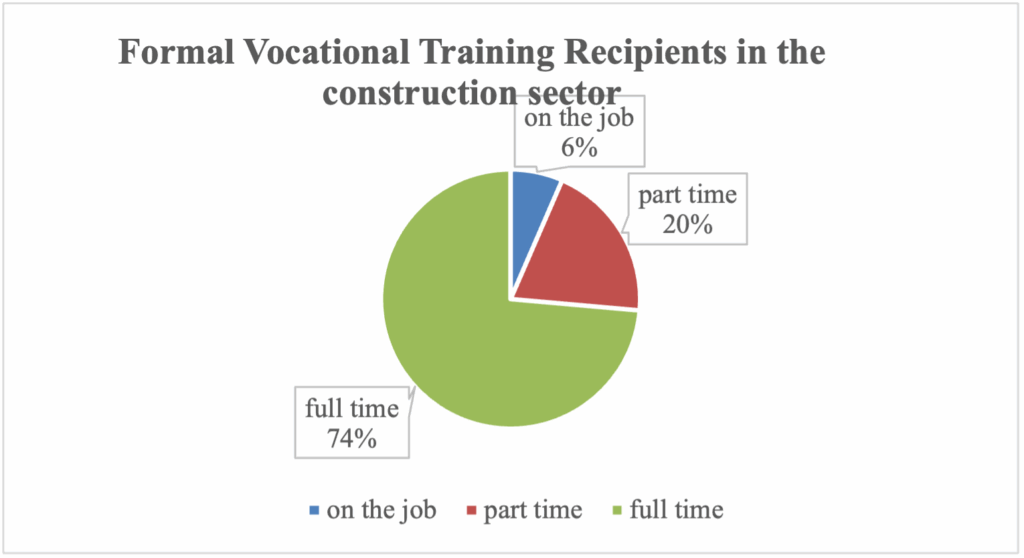
Figure 3: Distribution of Formal Vocational Training Recipients in the Construction Sector by types of training (Source: Author’s calculations based on PLFS 2021-22 data)
The type of vocational training among recipients in the construction sector predominantly involves full-time programs, which account for a substantial 73.59% of the total, reflecting the sector’s emphasis on intensive and immersive skill development. Part-time training constitutes 19.88%, providing a more flexible option for individuals balancing other responsibilities or seeking to upskill while working. On-the-job training, however, represents a relatively small share at 6.52%, indicating limited opportunities for hands-on learning integrated directly into workplace settings (see Figure 3 above). This distribution underscores a reliance on structured, dedicated training formats over practical, workplace-based approaches, which may influence the effectiveness and applicability of acquired skills in real-world construction environments.
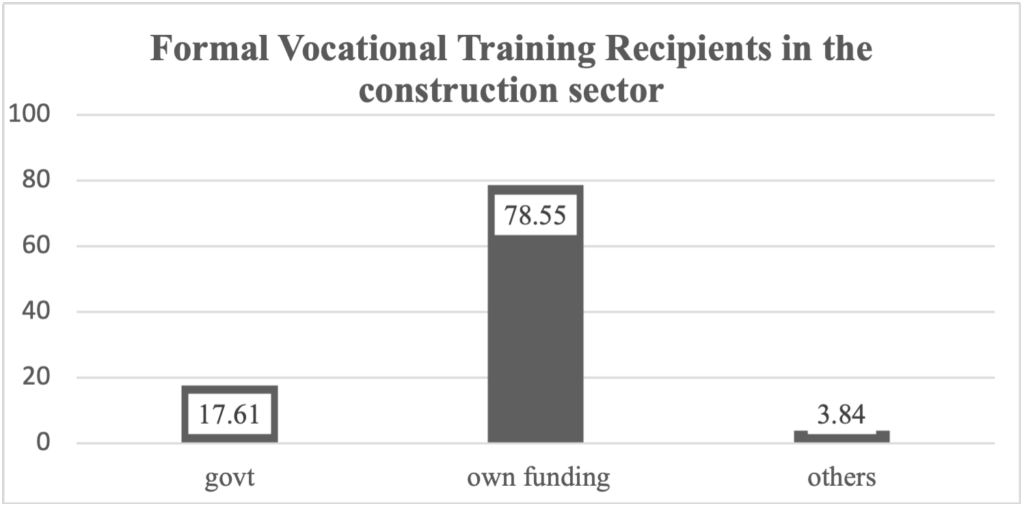
Figure 4: Distribution of Formal Vocational Training Recipients in the Construction Sector by source of fund (Source: Author’s calculations based on PLFS 2021-22 data)
The funding sources for formal vocational training in the construction sector reveal a dominant reliance on self-financing, with 78.55% of recipients funding their own training. Government support accounts for 17.61%, highlighting a moderate role of public funding in enabling vocational education. Meanwhile, contributions from other sources constitute only 3.84%, indicating minimal external assistance beyond government or personal funding (see Figure 4 above). This distribution reflects significant financial responsibility placed on individuals, which could act as a barrier for economically disadvantaged groups, potentially limiting equitable access to vocational training opportunities in the construction sector.
5 Demographic Profile of Vocational Training Recipients in the Construction Sector
The formal vocational training recipients in the construction sector reveal a significant gender disparity, with males comprising the overwhelming majority at 87.67%, while females account for only 12.33% of the total participants (see Figure 5 below). This skewed representation underscores the traditionally male-dominated nature of the construction sector and suggests potential barriers or limited access for women to vocational training opportunities in this field. Addressing this imbalance may require targeted interventions to promote greater female participation and inclusion in vocational training programs within the construction industry.
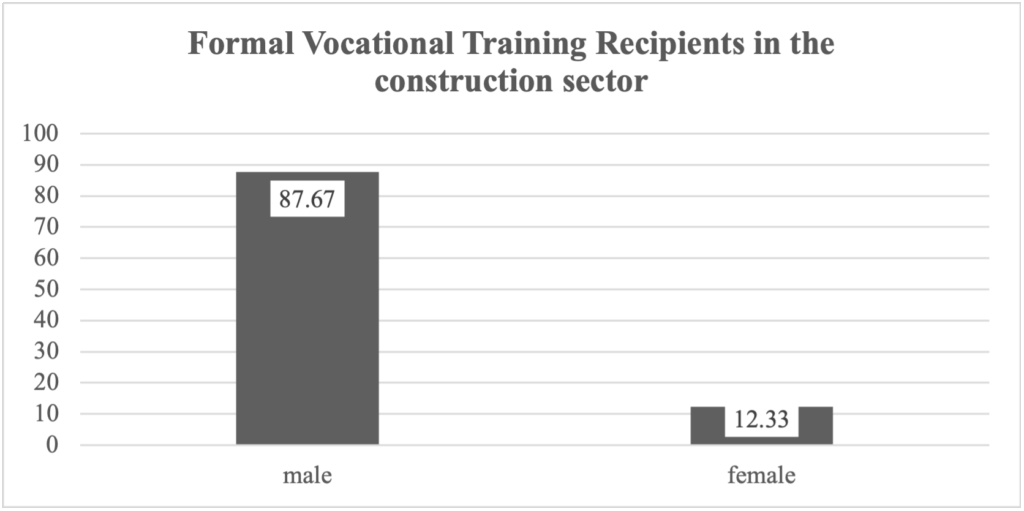
Figure 5: Distribution of Formal Vocational Training Recipients in the Construction Sector by Gender (Source: Author’s calculations based on PLFS 2021-22 data)
The age distribution of formal vocational training recipients in the construction sector shows that the majority fall within the younger age groups. The 15-29 age group constitutes the greatest share at 41.69%, closely followed by the 30-44 age group at 41.54%. In contrast, the 45-59 age group has significantly lower representation, accounting for only 16.77% (see Figure 6 below). This indicates that vocational training in the construction sector primarily attracts younger and mid-career individuals, with relatively limited participation from older age groups.
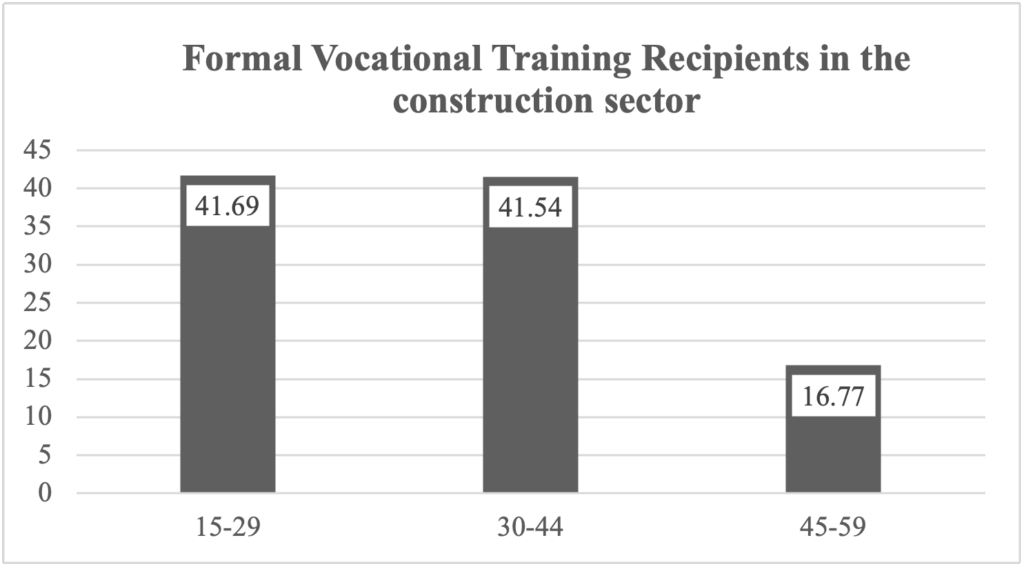
Figure 6: Distribution of Formal Vocational Training Recipients in the Construction Sector by Age Group (Source: Author’s calculations based on PLFS 2021-22 data)
Social groups show significant variation in their representation of formal vocational training recipients in the construction sector. Scheduled Tribes have the lowest participation at 6.81%, followed by Scheduled Castes at 19.71%. Other Backward Classes form the largest group, comprising 41.66%, while the “Others” category accounts for 31.83% (see Figure 7 below). This distribution underscores the dominance of Other Backward Classes and “Others” in vocational training participation, with Scheduled Tribes notably underrepresented, indicating potential disparities in access among different social groups.
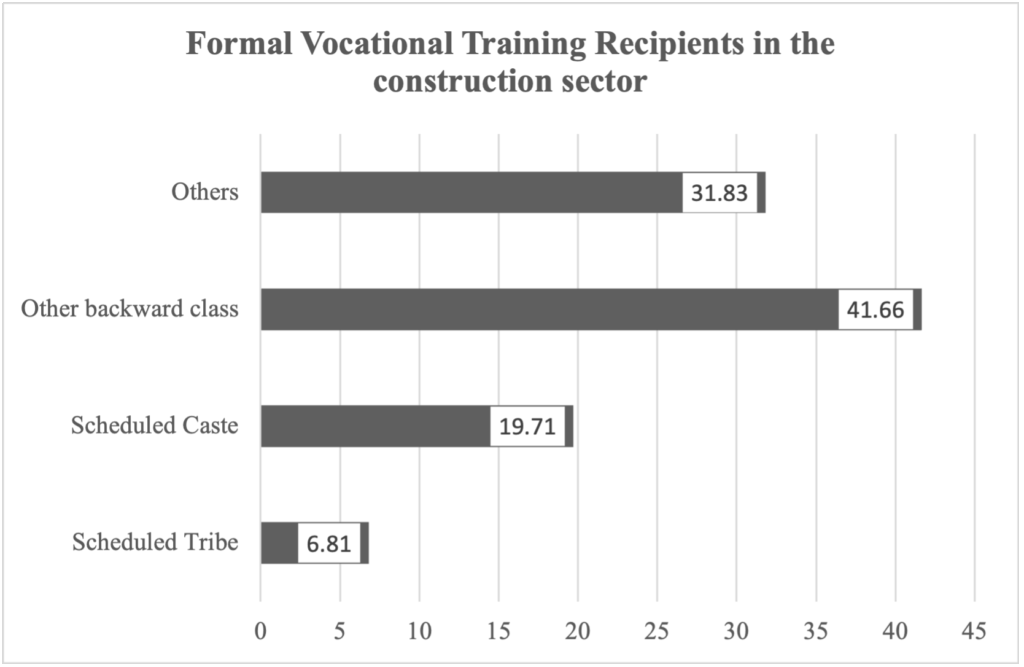
Figure 7: Distribution of Formal Vocational Training Recipients in the Construction Sector by Social Group (Source: Author’s calculations based on PLFS 2021-22 data)
The distribution of formal vocational training recipients in the construction sector reveals a slight urban predominance. Urban areas account for 55.06% of the recipients, while rural areas comprise 44.94% (see Table 4 below). This indicates that vocational training opportunities in the construction sector are more accessible to individuals in urban areas, potentially reflecting the concentration of training facilities, infrastructure, and job opportunities in urban settings compared to rural regions.
Table 4: Distribution of Formal Vocational Training Recipients in the Construction Sector by General Education (Source: Author’s calculations based on PLFS 2021-22 data)
| Sector | Formal Vocational Training Recipients in the construction sector |
| rural | 44.94 |
| urban | 55.06 |
| Total | 100 |
The general education levels of recipients of formal vocational training in the construction sector reveal a diverse range of educational backgrounds. The majority are highly educated, with 40.11% being graduates or above and 29.73% holding diplomas. Those with education levels between middle school and higher secondary make up 27.43%, while only a small proportion, 2.74%, are literate up to primary level (see Figure 8 below). This distribution suggests that vocational training in the construction sector predominantly attracts individuals with higher educational qualifications, potentially reflecting the increasing emphasis on education in skill development programs.
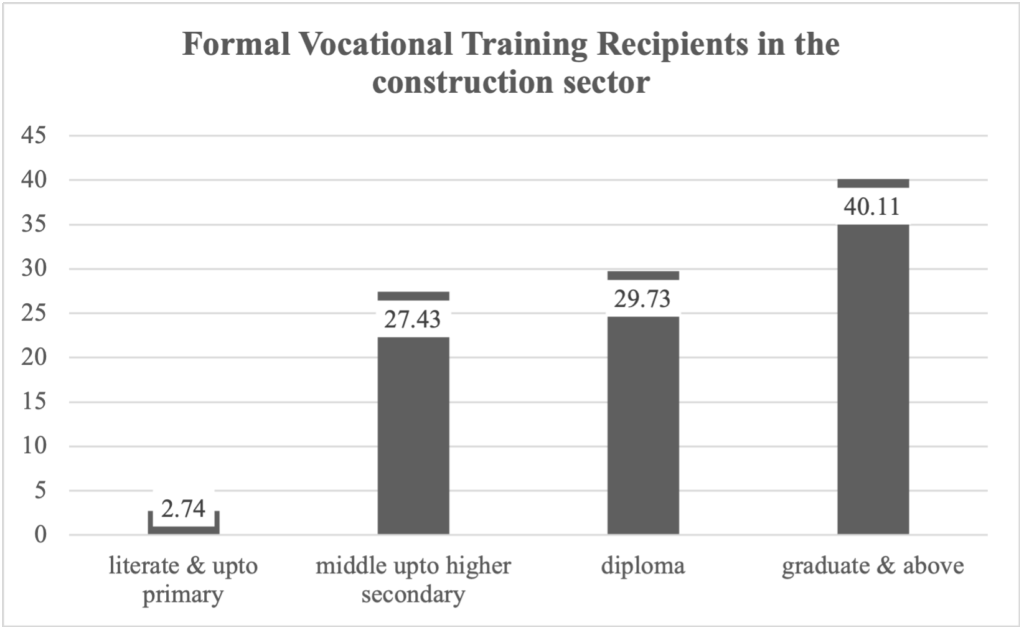
Figure 8: Distribution of Formal Vocational Training Recipients in the Construction Sector by General Education (Source: Author’s calculations based on PLFS 2021-22 data)
The marital status of recipients of formal vocational training in the construction sector indicates that the majority, 61.76%, are currently married. Those who have never married constitute 35.69%, while widowed and divorced individuals represent a much smaller share, at 1.81% and 0.73%, respectively (see Figure 9 below). This distribution suggests that vocational training programs in the construction sector attract a significant number of married individuals, possibly reflecting their motivation to enhance skills and income for family support. In contrast, participation from widowed and divorced individuals remains minimal.
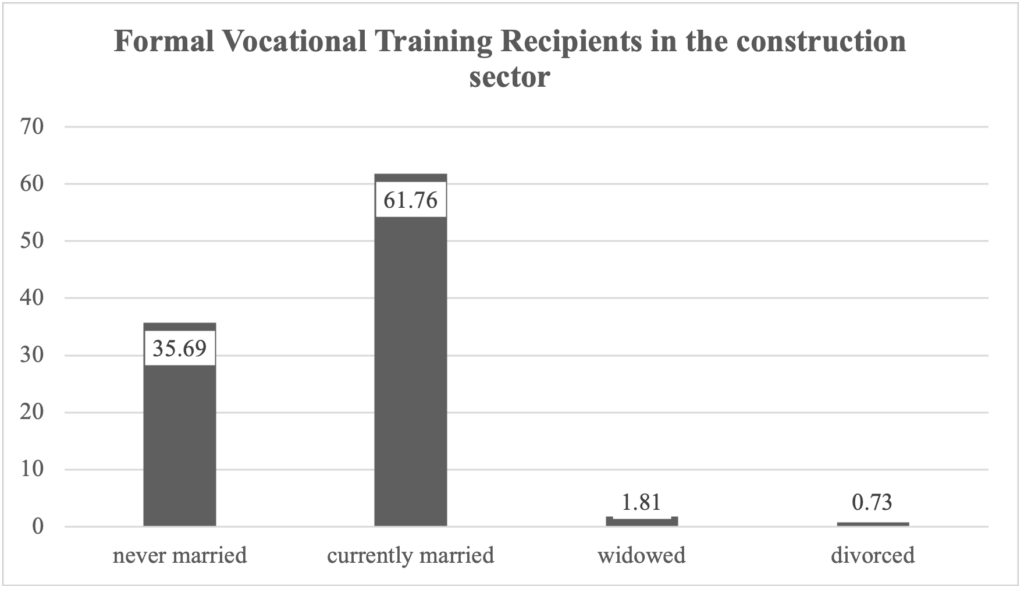
Figure 9: Distribution of Formal Vocational Training Recipients in the Construction Sector by Marital Status (Source: Author’s calculations based on PLFS 2021-22 data)
The distribution of formal vocational training recipients in the construction sector across states reveals significant regional disparities. Maharashtra leads with the highest share, accounting for 23.84% of the total participants, followed by Tamil Nadu at 19.52% and Kerala at 9.44%. Andhra Pradesh also has a notable presence at 6.08%, while Rajasthan and Gujarat contribute 5.78% and 5.72%, respectively. States in the northern region, such as Himachal Pradesh (4.09%) and Uttar Pradesh (3.08%), and eastern states like West Bengal (4.08%) and Madhya Pradesh (3.29%), display moderate representation (see Figure 10 below). This concentration in a few states suggests that vocational training programs are more developed or accessible in these regions, possibly due to better infrastructure, demand for skilled labour, or state-level initiatives.
In contrast, several states and Union Territories show minimal representation. Northeastern states such as Sikkim (0.02%), Arunachal Pradesh (0.1%), and Nagaland (0.07%), along with Union Territories like Lakshadweep (0.01%) and Puducherry (0.08%), contribute negligible numbers. States like Uttarakhand (0.92%) and Bihar (0.71%) also exhibit low participation rates (see Figure 10 below). This stark variation may reflect unequal access to vocational training opportunities, differences in economic activities, or demographic factors influencing participation in the construction sector. These findings underline the need for targeted interventions to enhance the reach and effectiveness of vocational training programs in underrepresented states and regions.
Figure 10: State-wise distribution of Formal Vocational Training Recipients in the construction Sector (Source: Author’s calculations based on PLFS 2021-22 data)
6 Conclusion
The study’s findings reveal significant regional and demographic disparities in vocational training participation. While urban areas and states such as Maharashtra, Tamil Nadu, and Kerala exhibit higher enrolment, rural areas and northeastern states showcase considerably lower enrolment, indicating unequal access to training opportunities. Furthermore, there is a gender imbalance, with males comprising the majority of participants. The training programs tend to attract younger individuals and those with higher education, reflecting the growing emphasis on skill development in the construction sector. However, the reliance on self-financing for training poses a barrier for economically disadvantaged groups, limiting equitable access to skill development opportunities.
In conclusion, the study accentuates the need for targeted interventions to enhance inclusivity and accessibility in vocational training for the construction sector. There is a need for better alignment between training programs and industry requirements to ensure the effective utilization of skills and reduce underemployment. Additionally, efforts must be made to address regional disparities, promote female participation, and make training more accessible to marginalized social groups. Policymakers and industry stakeholders must collaborate to develop a more equitable and efficient vocational training system that meets the evolving demands of the construction industry.
References
Agrawal, T. (2012). Vocational education and training in India: challenges, status and labour market outcomes. In: Journal of Vocational Education & Training, 64, 4, 453-474.
Kumar, R., Mandava, S., & Gopanapalli, V. S. (2019). Vocational training in India: Determinants of participation and effect on wages. In: Journal of Empirical Research in Vocational Education and Training, 11, 1, 1-17.
Lopes, J., Ruddock, L., & Ribeiro, F. L. (2002). Investment in construction and economic growth in developing countries. In: Journal of Building Research & Information, 30, 3, 152-159.
National Skill Development Corporation (n.d.). Construction Skill Development Council of India. Online: https://nsdcindia.org/nos-listing/12 (retrieved: 17.02.2025).
National Statistical Office (2022). Periodic Labour Force Survey (PLFS) 2021-22. New Delhi: Ministry of Statistics and Programme Implementation.
University Grants Commission. (2015). Guidelines for Bachelor of Vocation (B.Voc.) Program. Online: https://www.ugc.gov.in/pdfnews/8508026_guidelines-on-b-voc_final.pdf (retrieved: 15.02.2025).
van Heerden, A., Jelodar, M. B., Chawynski, G., & Ellison, S. (2023). A study of the soft skills possessed and required in the construction sector. In: Journal of Buildings, 13, 2, 522.



